Sometimes a business need drives the home garden market. That’s how it was with pollen-free sunflowers, certain varieties of Helianthus annuus.
These varieties first became popular with florists and wedding planners.
The idea was less about preventing allergic reactions and more about keeping cut sunflowers from leaving a bright yellow stain on white tablecloths, work shirts, wedding dresses, and such.
Plant hybridizers started to breed male-sterile sunflowers that don’t produce pollen as part of the process of developing new cultivars.
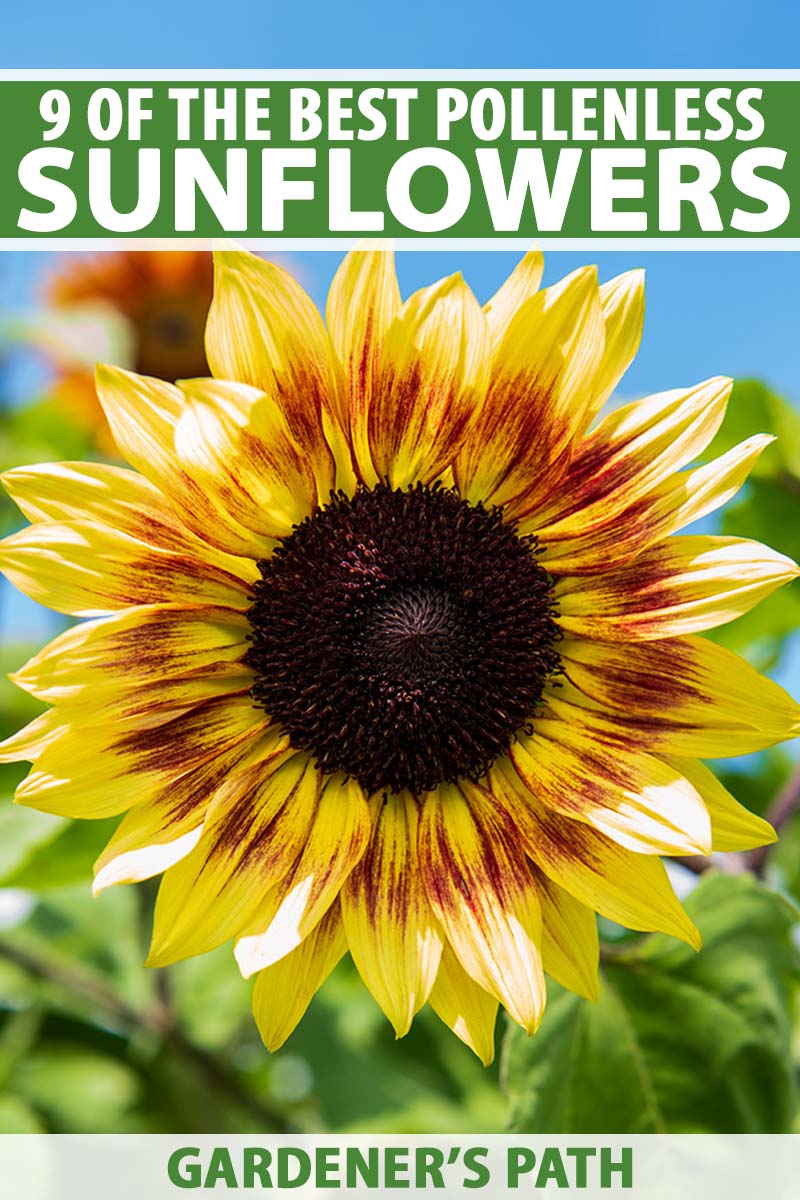
We link to vendors to help you find relevant products. If you buy from one of our links, we may earn a commission.
Soon they began applying the same process to benefit the floral design industry. Next, the idea caught on with the home and garden consumer market.
Today there are so many varieties of pollenless sunflowers available that you can find cultivars in numerous colors, ones with a branching habit or that grow on a single stem, and types that bloom on various timetables.
I’ll guide you through some of the best varieties to choose for different scenarios in a minute, but first I want to answer an obvious question:
Why would you want to grow pollenless sunflowers in your home garden?
The reasons vary.
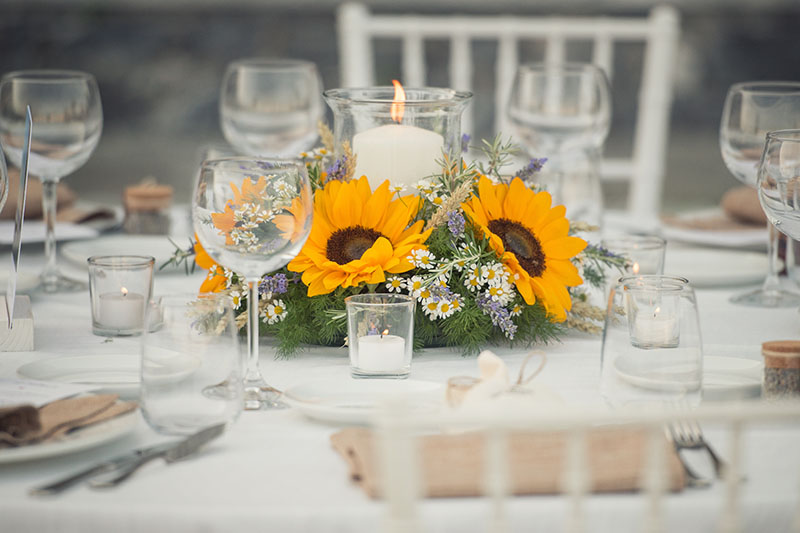
You may prefer growing these flowers to supply a local market, or if you’re making your own arrangements and bouquets for a wedding or celebration.
Maybe you just prefer to keep pollen off your furniture, or you want varieties that bloom quicker, which is usually (but not always) the case with pollenless cultivars.
These blooms also tend to last longer in cut flower arrangements than their open-pollinated counterparts.
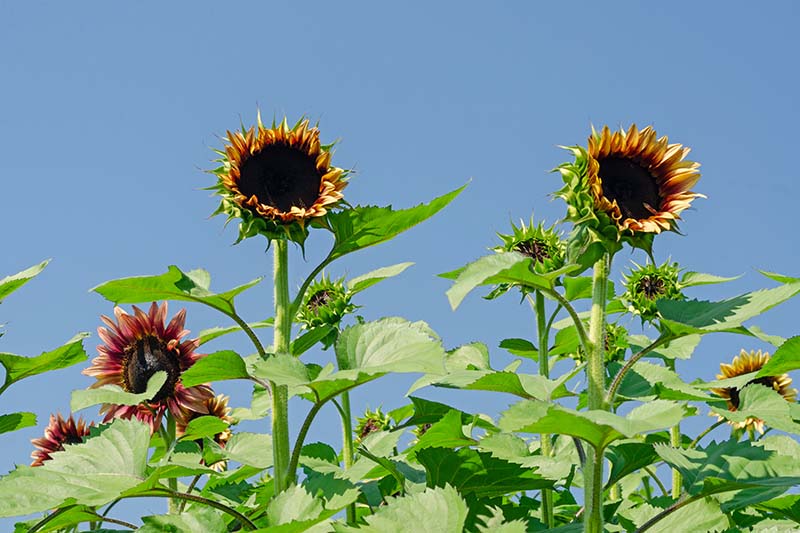
Or, you may just fall in love with the looks of the blooms on a variety that doesn’t produce that dust.
I will say that being allergic to sunflowers is not a huge motivator here. It’s not like anyone buries their nose in the bright blooms, because they don’t really give off much of a scent.
But if you’re super susceptible to hay fever, and plan to spend considerable time around the cut flowers, that might be another reason to grow varieties that produce zero pollen.
Of course, there are some situations where you’re better off with a variety that does produce pollen.
For one, the old-fashioned types of sunflowers tend to bloom over a longer period of time.
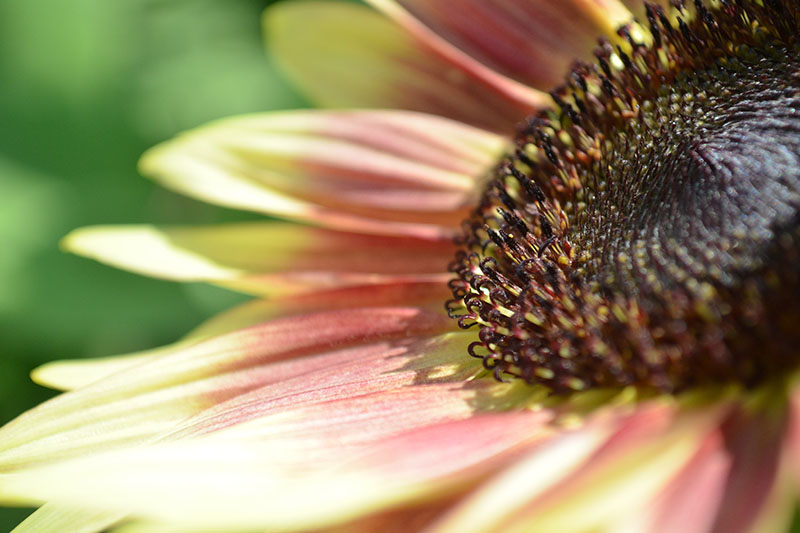
They also do more to nurture bees and other pollinators, according to sources like the Center for Agriculture, Food, and the Environment at the University of Massachusetts Amherst.
While pollenless sunflowers still offer bees nectar, the open-pollinated varieties produce both nectar and pollen, so bees can make one stop for both sources of sustenance. (Butterflies, though, love the blooms that produce only nectar.)
As is the case with most gardening decisions, there are trade-offs. But if you’re opting for Team No-Pollen, you have a real treat in store. There are so many fun and beautiful options!
Here are nine of the most popular pollenless sunflowers that I’ll highlight:
9 Popular Pollenless Sunflowers to Grow in Your Garden
1. Buttercream
The exquisite creamy petals on ‘Buttercream’ are light and fluttery, almost like they’re dancing at a wedding.
They take about 70 days to bloom, and the cut flowers will last many days longer than open-pollinated selections.

They’re perfect for bridal bouquets and reception centerpieces, certainly, but also appreciated as part of everyday displays of affection.
‘Buttercream’ is a feast for the eyes.
Packets of 25 seeds are available from via Amazon.
2. Chocolate Cherry
What if life is not like a box of chocolates, Forrest? What if instead it is a tall vase full of alluring, branching blooms in chocolate and cherry hues?
We wouldn’t have to run as far to work off the calories, that’s for sure.
And everyone could equally enjoy the borders, beds, or flower arrangements filled with six to seven-foot ‘Chocolate Cherry’ plants.
They don’t contain sugar, after all – and they don’t produce pollen, either.
Find seeds in a variety of packet sizes available at Burpee.
3. Firecracker
These appropriately-named sunflowers score oohs and ahs in the daytime, lighting up the garden and the flower vase instead of the sky.
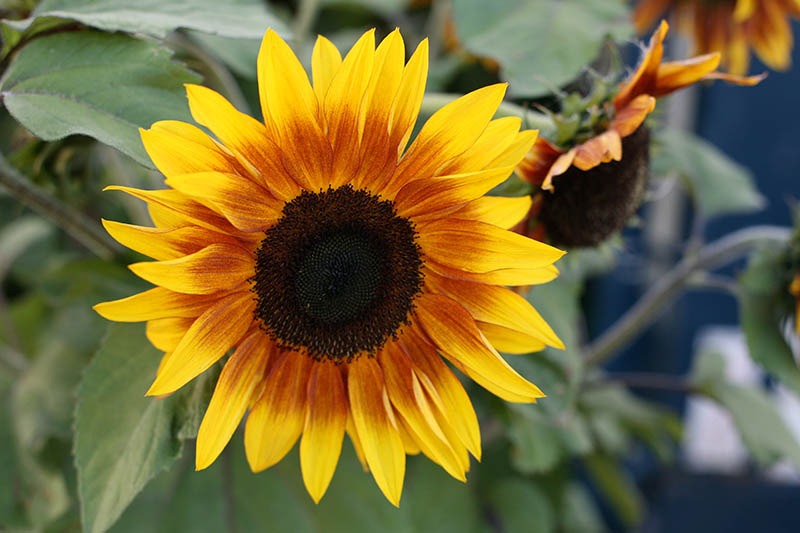
‘Firecracker’ blooms with a burst of beauty and energy. The four- to five-inch flowers have dark, velvety centers ringed with ember-red petals that are tipped with sun-kissed yellow.
Look low to see the spectacle. ‘Firecracker’ grows to a maximum height of just two to three feet.

As a semi-dwarf variety, it’s ideal for those looking for vibrant color in a mid-border, or a splashy container annual with masses of blooms in a small space.
They’ll brighten your days, and do it quickly, taking just 55 days to explode into red and gold. And they’ll add excitement to your summer without scaring the dogs or keeping you up past your bedtime.
You can find packets of 150 seeds available from Seed Needs via Amazon.
4. Junior
Yes, the name of this cultivar makes me wonder who “Senior” might be.
But my only other question about this variety is, “What took you so long?”
‘Junior’ is the first dwarf branching cultivar among pollenless sunflowers. It’s perfect for pots, growing only to about 30 inches tall.
This means you can readily grow a centerpiece outdoors and move it into the event space at will. Genius!
The blooms have cheerful yellow petals with dark centers, a full-sized four or five inches per flower.
I think they look almost like bolder, bigger, black-eyed Susans. But if they’re bigger, they wouldn’t be named ‘Junior’… or would they?
I’m not going to ask.
5. Moulin Rouge
The petals in tones of rust, red, and burgundy would surely inspire Toulouse-Lautrec to pick up his paintbrush.
But these works of art grow on stalks five to six feet tall, with one center bloom flanked by side blooms.
Perhaps they’re in formation for a cabaret number?
You can find ‘Moulin Rouge’ seeds in a variety of packet sizes available at Eden Brothers.
6. ProCut® Series
Leave it to the pros? That’s not usually my motto, because I like to get my own hands dirty and set my own pace in the garden.
But for these sunflowers, I’ll make an exception. They are some of the best-known pollen-free varieties, developed for pro florists and growers.
All of the varieties in the ProCut® Series are known for growing in average soil, standing up to heat, and tolerating drought. And they’re available in a variety of colors.
Another advantage: these bloom in as little as 50 days, which is almost a month earlier than many tall heirlooms.
The orange ProCut® Series sunflowers are a colorful reminder of autumn, with daisy-style petals surrounding a rich brown disk.
The red flowers from the ProCut® Series are just as hardy, but they form three to four-inch heads with deep, dusky red petals that frame the dark center disk, also daisy-style.
An attractive gold option with glorious yellow petals radiating from a greenish-golden center disk is also available.
Another bonus: while sunflowers do best with direct sowing, you can get a head start on a short season by starting this type of seed indoors six to eight weeks prior to the average last frost date – same as the pros do.
ProCut® Series seeds are available from True Leaf Market in packets of 500. You can order each color individually, or a mix of all three.
7. Santa Fe Sunset
This pollen-free beauty shares its name with the city in New Mexico famed for its vibrant art community. It, too, has an abundance of Southwestern flare.
The fully-double blooms on a multi-head stalk will open to five to eight inches in diameter. And what a display!
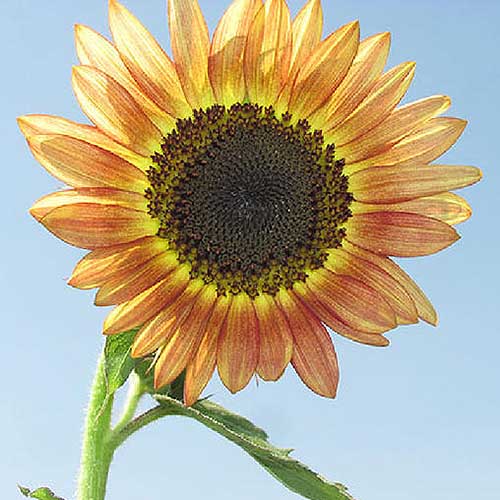
The daisy-shaped petals radiate out from a deep, wide, chocolate-colored center. The yellow ring bleeds out to burgundy and then to deep peach, reminiscent of a woven blanket or a desert sunset.
You can find ‘Santa Fe Sunset’ seeds in various packet sizes at Eden Brothers.
8. Strawberry Blonde
If you’re the type who constantly plays with hair color or repaints the walls every two months, well, this flower might help you to fight (or to satisfy) those urges.

It comes in a completely experimental color – the first standardized rose pink sunflower. But unlike those dubious chemical color processes, this strawberry blonde looks picture perfect every time.
The yellow-tinged flowers have deep blush petals surrounding a dark disk.
They provide an abundance of blooms on branching plants, so you’ll have plenty to cut and arrange, without having to wear the results out in public if things don’t work out as planned.
Just make sure you have enough space for this freshly-colored variety. ‘Strawberry Blonde’ grows six feet tall and spreads at least two feet.
If you don’t allow enough space, it might take over less aggressive bedding plants, and the blooms are so pretty you’ll probably have to just let them do it.
You can find packets of 30 seeds available from Burpee.
9. Van Gogh
“Starry Night” gives way to daylight brightness with this namesake bloom.
Dutch post-impressionist Vincent van Gogh was enthralled with sunflowers, and rendered them so finely that the artist and the flowers are still associated more than a century after his death.
Each stem produces just one flower, with lemon yellow petals fanning out from centers of rich gold punctuated by green-gold centers, looking quite like the flowers portrayed in Van Gogh’s work.
Does art imitate life, or do these vibrant flowers conjure the priceless masterpieces hung in far-flung museums? When you’re viewing this sunny delight, the answer is, “Both.”
Sunflowers, Hold the Pollen, Please
It’s been fun sharing these top pollenless sunflower options with you, but now I’m going to share a secret:
I’ve never met a sunflower I didn’t like!
No matter which type you choose to grow, I’m going to be wildly enthusiastic.
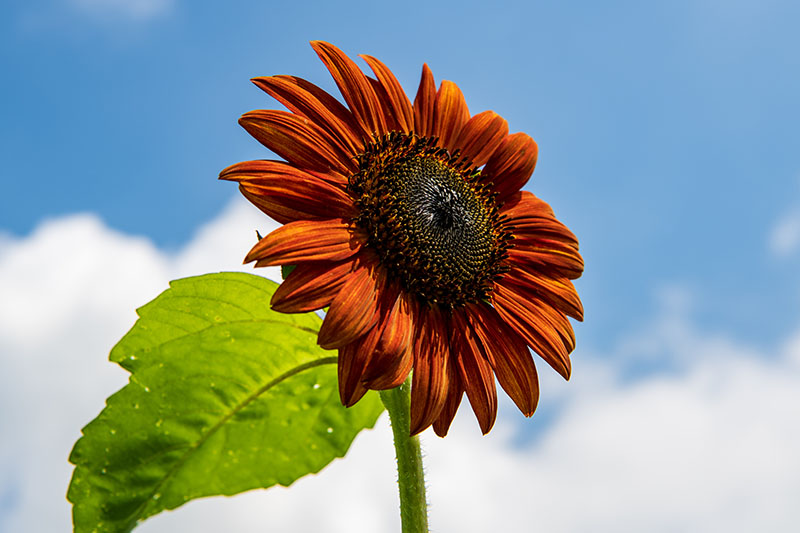
There are so many options, from these hybrid versions that won’t leave yellow powder in their wake, to the extra-dwarf minis with just a bit of pollen, to the towering old school versions, some of them with plate-size blooms.
I’m always open to hearing about other people’s favorites, too, so please jump in on the comments section and share your tips, choices, and questions.
And if you’re interested in learning more about growing sunflowers in your garden, check out these guides next:
- How to Grow Sunflowers: A Beautiful and Tasty Addition to Your Landscape
- How to Grow Teddy Bear Sunflowers
- How to Help Sunflowers That Won’t Bloom
- How to Protect Sunflowers from Birds and Squirrels
© Ask the Experts, LLC. ALL RIGHTS RESERVED. See our TOS for more details. Product photos via Burpee, David’s Garden Seeds, Eden Brothers, Renee’s Seeds, Seed Needs, and True Leaf Market. Uncredited photos: Shutterstock.
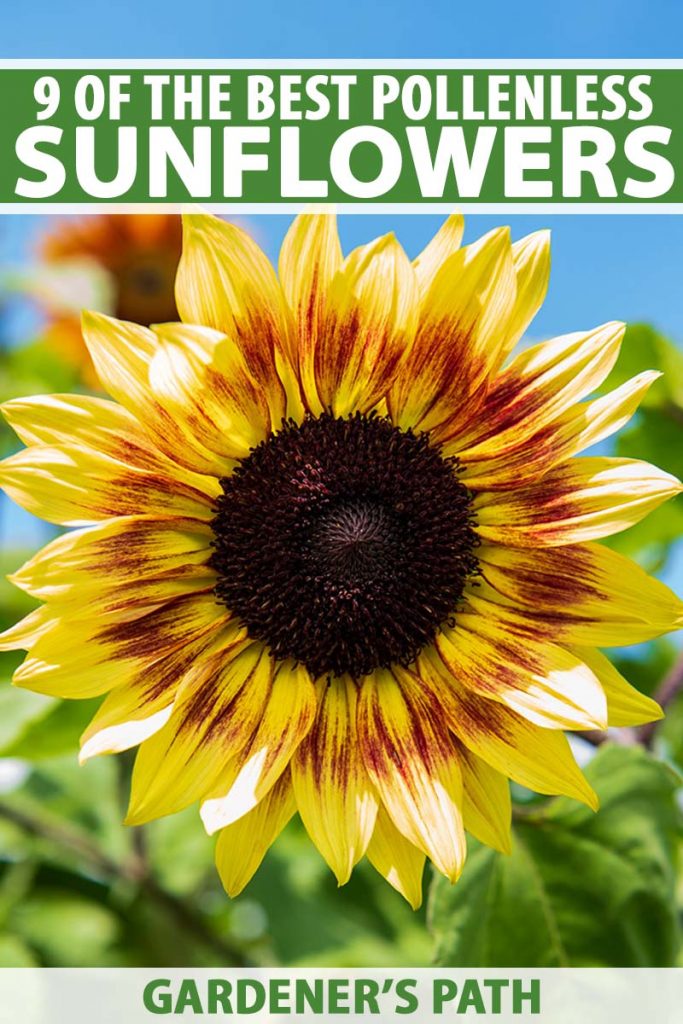
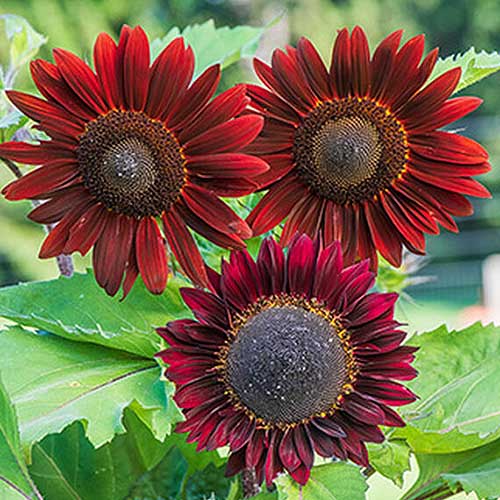
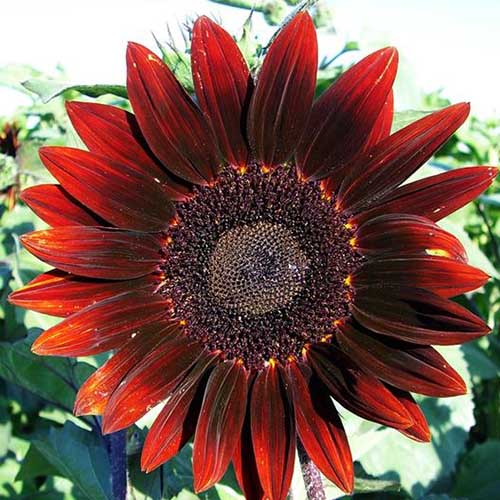

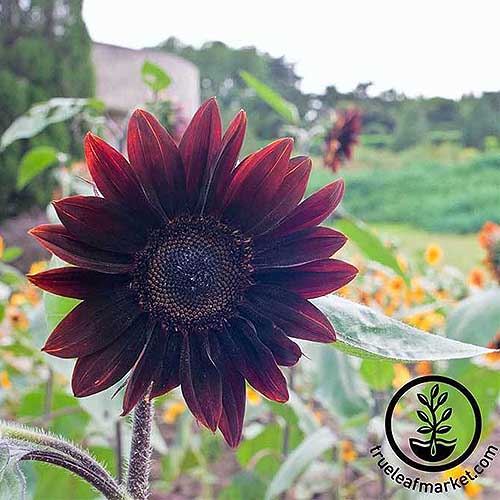

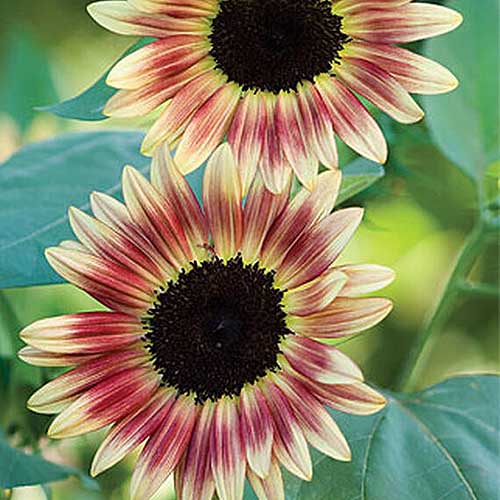
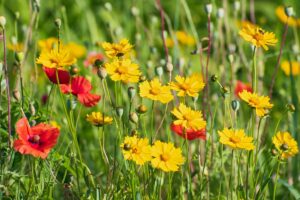

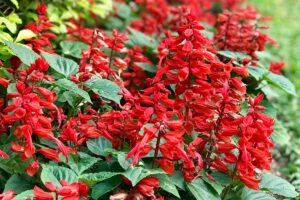
What a great article, thank your! Also, love the format of this website that keeps the ads on the “down low!l 🙂
Aw, thanks so much for the kind words, Lisa B!
Love this article, Rose. Thank you! We’re doing a sunflower growing contest at our work, using pollenless varieties in case of allergies. So this is perfect!
Which of the varieties above are likely to grow the tallest please?
Thanks for reading Elliot, and you must have a wonderful workplace to be conducting such a contest!
‘Strawberry Blonde’ and ‘Santa Fe Sunset’ will both grow to 5-6 feet tall, ‘Moulin Rouge’ should attain 60-80 inches tall 5-6.5 feet), and ‘Chocolate Cherry’ will most likely get tallest, growing 6-7 feet. And can I just add, “Photos, please” if your contest works out?